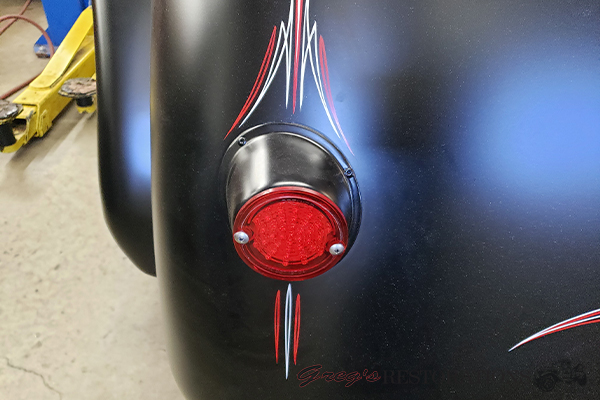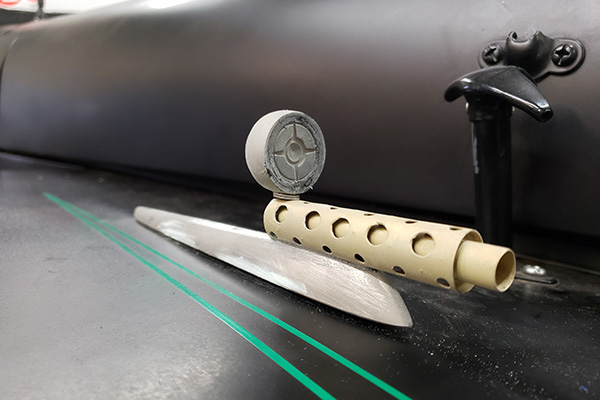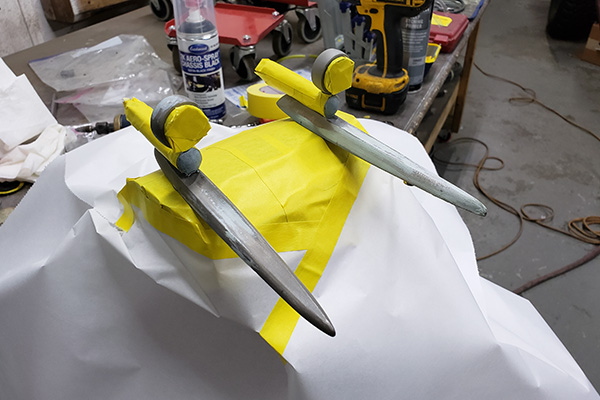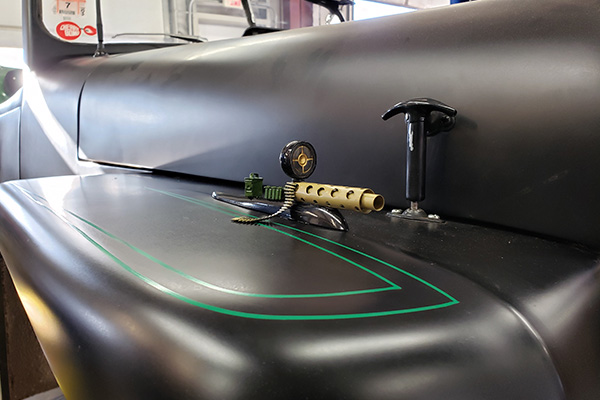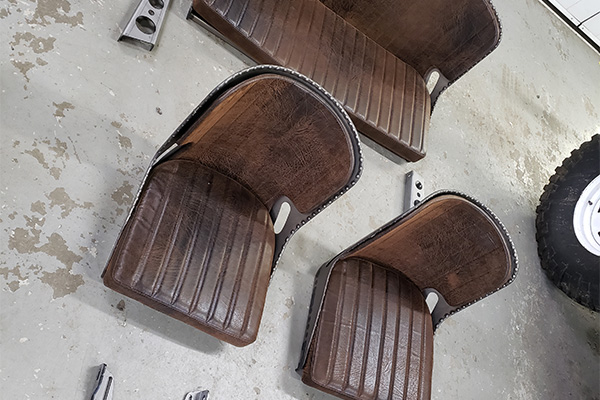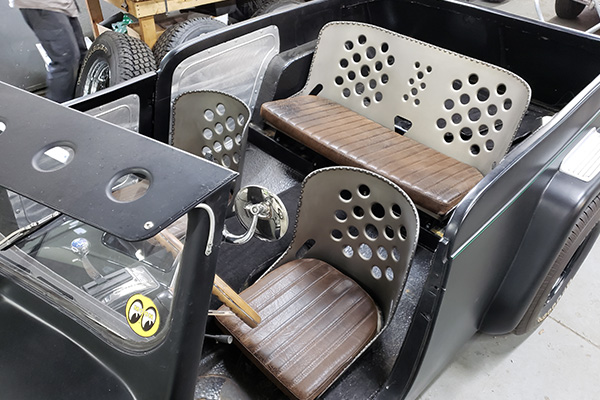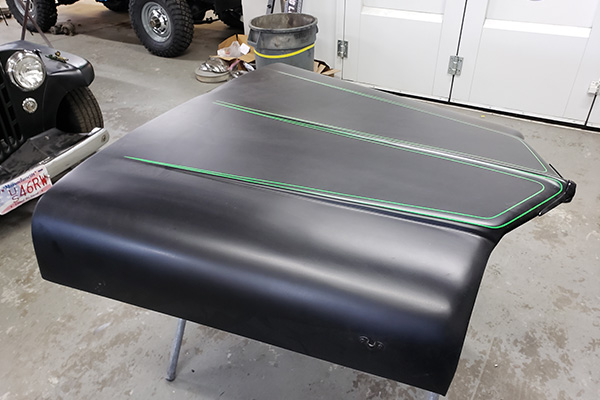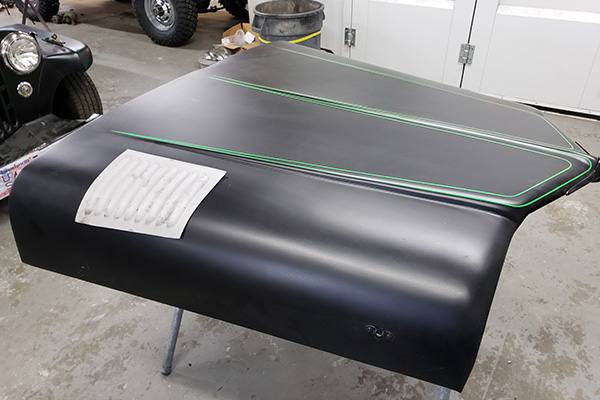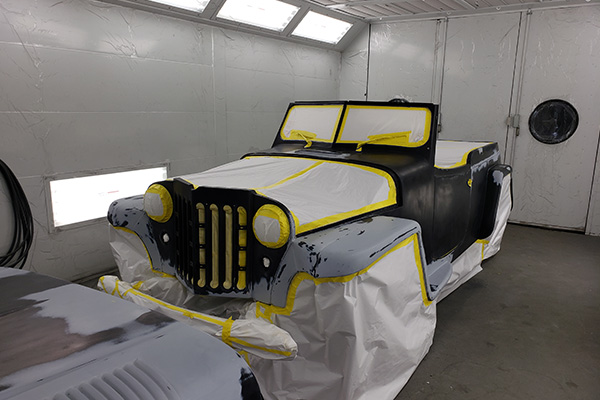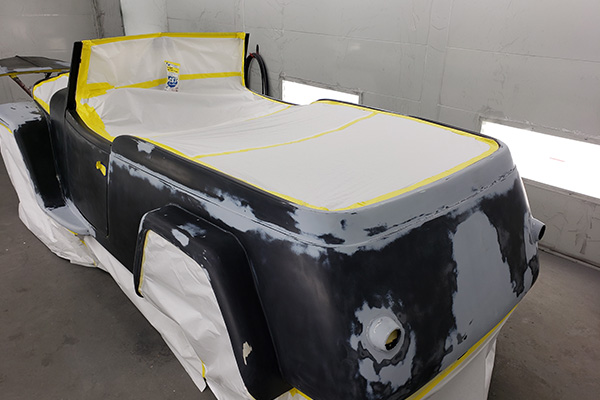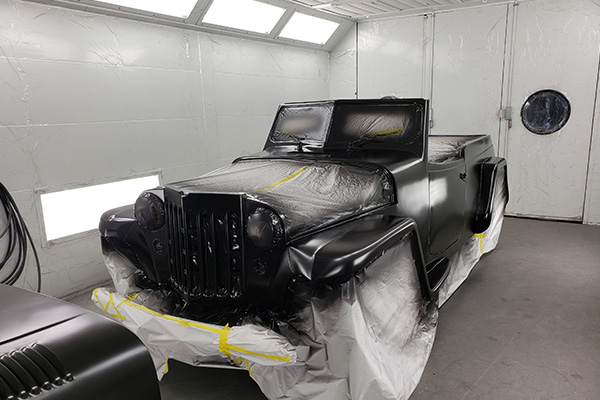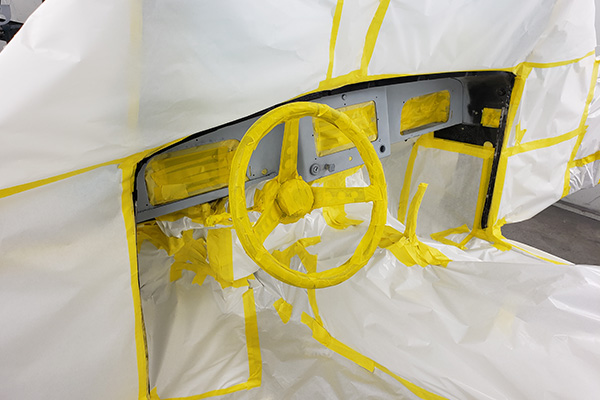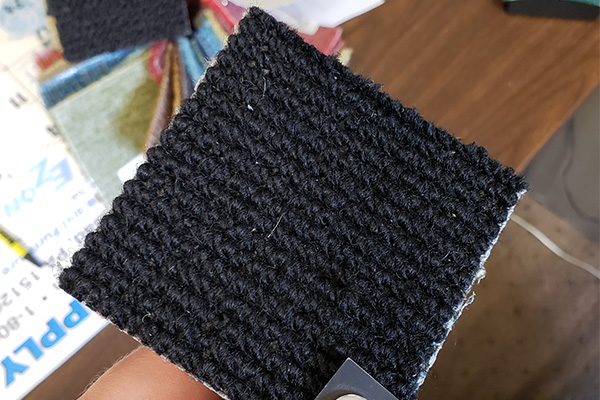

The goal of this project was to take this Jeep to the next level and bring the owner’s vision to life. The timeless rat rod/bomber look combined with the one year styling of this rare Jeep make it something very unique and special. The original purpose and design of the Jeepster was to be taken out and driven for the sake of driving, to cruise down the open road with nothing but sky above you and now it will continue to do just that for years to come.
| WW2 Bomber Style Seats W/ Distressed Leather Interior | Dimple Dyed Interior Panels And Seat Pans | Ford V8 W/ Automatic Transmission |
| Custom Stitch Welded Center Console | Customer Leather Upholstery | Auto Meter Classic Gauges |
| Fj40 Hood Vents | Flat Black Paint W/ Custom Pinstriping | Big Floor Gas Pedal |
| B&m Shifter | Upgraded Retrosound Stereo System | Custom Unique Machine Guns On Fenders Built Out Of Fender Markers |
| Autometer Gauges & Clock | Aluminum Radiator W/ Electric Fans |

Only three years after the end of World War Two, Jeep was poised to hit the general public with as many new models as they could based on their growing popularity from returning soldiers. The Civilian Jeep, truck and wagon models had already sold well and a further expansion into “sports cars” was on the horizon. Still looking very much so Jeep, the Jeepster would stand out from the rest of their line up by being two wheel drive only and being dubbed by Jeep themselves as “An exciting new sports phaeton” and “America’s outstanding sports car”. Jeep was no stranger to open air vehicles but it was always with purpose. However with the Jeepster it was for fun and enjoyment and it would marketed as such. Typical Jeep ads of the time showed the versatility of the Civilian Jeep as a do it all tool at the homestead or farm, the Jeepster would change all that by showing well-dressed men and women out on the town or simply just driving for the enjoyment of it. Simply put the Jeepster was about fun and other Jeeps were all about work. In its short production run from 1948 to 1950 only nineteen thousand would be made. This particular Jeepster is a final year 1950 model and has the one year styling that would carry on nearly untouched through the 1960s in the truck and wagon models. Only fifty eight hundred were made in 1950 before the Jeepster would fade away into obscurity for nearly two decades.
The restoration project actually starts with the previous restoration that this Jeep received several years prior. It was restored in a “rat rod” theme but many corners were cut. The finished product was interesting but lacked the details and quality to make it a one of a kind car. The best part of “rat rod” style cars is imagination, with little to no rules or boundaries on style they can paint a picture of someone’s personality. The typical “rat rod” image starts with matte black paint and it’s hard to argue with what looks good, so a proper paint job was done but not before some unique touches were made. Greg’s Restorations specializes in Toyota 4x4s but can tackle any project. That doesn’t mean we can’t raid the parts bin for some one-off modifications. In this case Toyota FJ40 hood vents were removed from a donor vehicle and grafted into the Jeepster hood for a look we can guarantee no one else has! After that one hundred percent custom machine gun fender emblems were fabricated. Using a variety of items these World War Two aviation style machine guns were crafted and mounted to the factory Jeep fender trim. The exterior look would be finished off with red and white pin stripping and “Fritzter” hand painted on the front fenders. The vehicle was nicknamed the Fritzster because the owners name was Fritz and it was originally a jeepster.
The interior is just as unique as the exterior, themed in a “Bomber” style reminiscent of the cockpits of World War Two bombing aircraft like the B29 Super Fortress and B24 Liberator. With dimple dyes, stitch welding, aluminum rivets and bead rolled brushed aluminum the Jeep looks more aircraft than automobile. Previously low quality plain looking gauges were mounted off center in the dash, this would be replaced with a proper set of Autometer Classic gauges and a modern reproduction antique radio. To finish off the interior the seats were upholstered in a distressed leather. Overall, throughout the Jeep the ideas were there they just needed to be improved and elaborated to take it from interesting to one of a kind.









